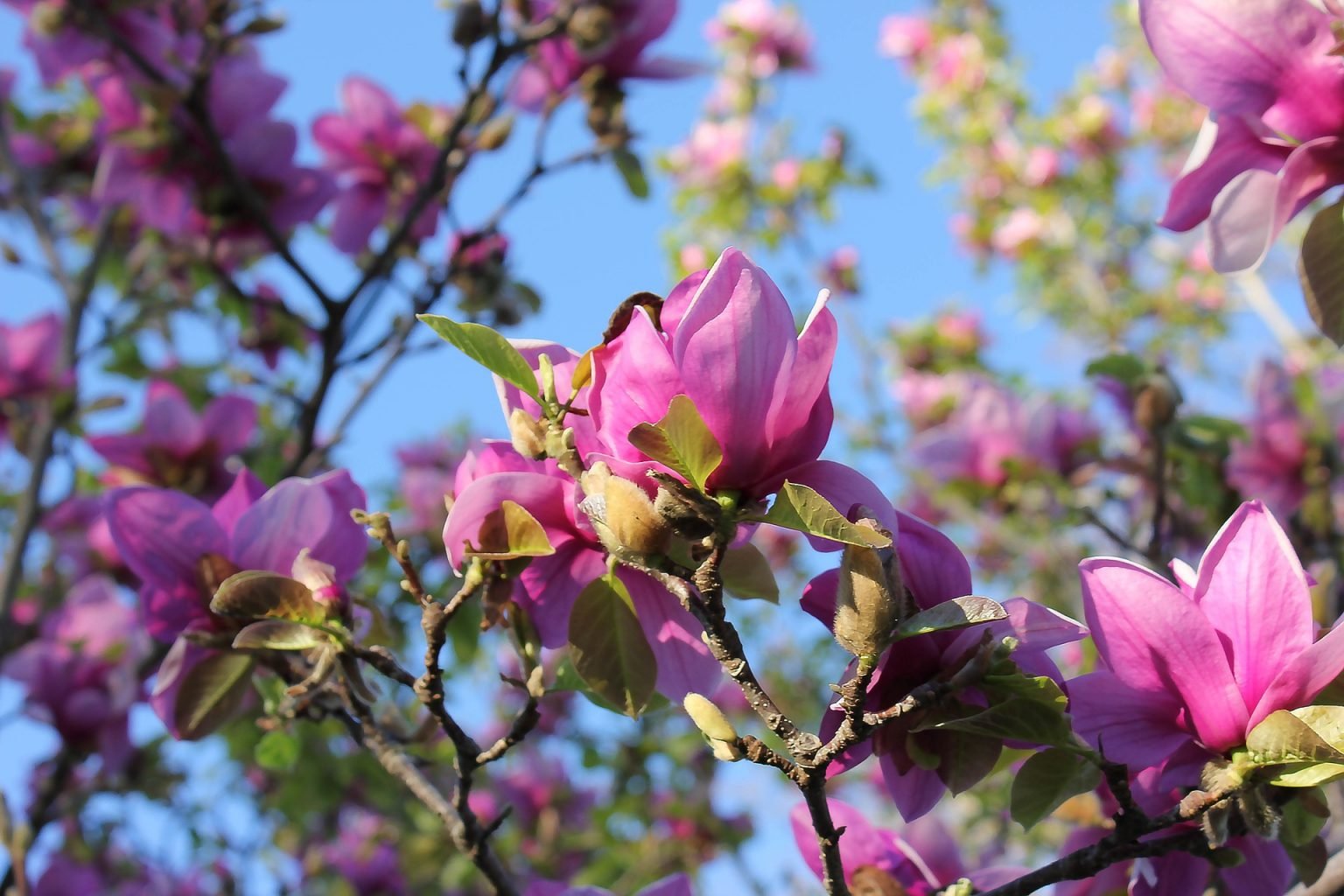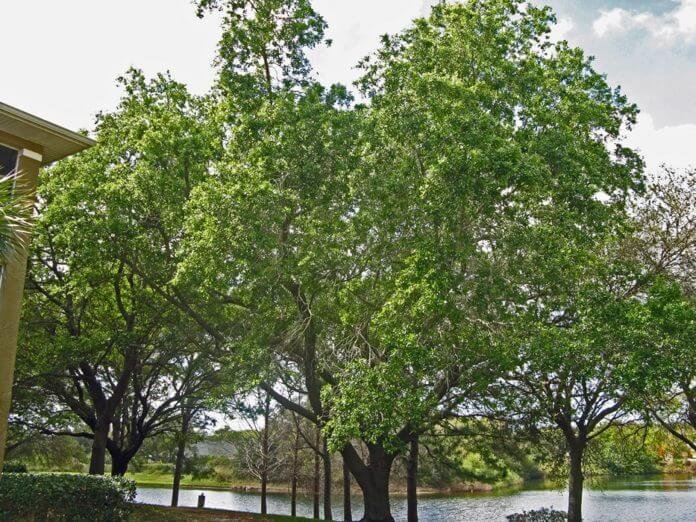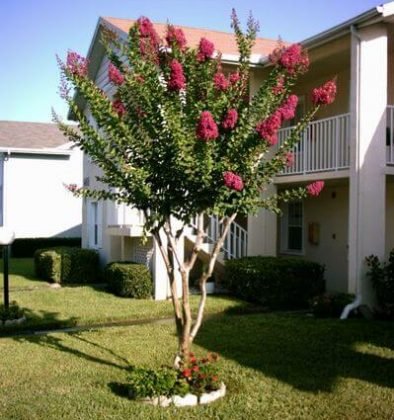Saucer Magnolia Tree

The Saucer Magnolia Tree is a multi-stemmed spreading tree that is much smaller in size compared to the large Magnolia trees often seen in landscapes. When blooming large colorful flowers mixed in with their shiny green leaves makes them very attractive. During the summer the large green leaves fill the tree giving them an evergreen look. In the fall the leaves will turn to a wonderful display of yellow colors.
In the winter this deciduous tree shows a nice light gray bark with large fuzzy green flower buds on the tips of branches. All year long the Saucer Magnolia tree offers natural beauty.
The Saucer Magnolia tree can grow to a height of anywhere from 10 to 25 ft. with a spread of 10 to 30 ft. Some varieties will only reach 15 ft. wide making them great for along sidewalks, driveways, patios, or decks. Almost all varieties can be placed in a container or planter. Pruning up can be done for pedestrian clearance or for spacing purposes. However, older trees do not like pruning since large wounds may not close too well. It is best to prune trees early in their life in order to train them into the form that is desired.
The growth rate for the most part is moderately fast, though some types grow slower than others. As the tree reaches an age of around 20 years growth rate tends to slow down. When young the Saucer Magnolia tree starts growing upright and then eventually becomes oval in shape by the time it reaches 10 years old.
The Saucer Magnolia Tree begins to flower in late winter to the early spring. Some varieties will bloom earlier than others while some can start blooming later. Depending upon the tree variety the flower color can be either pure white, white with a pink shade, white with a purple shade, or a deep purple single color. No matter what flower color each individual tree species produces they are all showy and eye-catching. At the end of this article is some information on Saucer Magnolia Tree varieties.
Saucer Magnolia Tree Placement
A Saucer Magnolia tree will do best if placed in a sunny location. This way the tree can develop a symmetrical crown. They can be grown in partial sun as long as the tree gets the right amount of filtered sunlight. If placed in an area that is totally shaded they will grow to be thin and leggy.
Saucer Magnolia trees prefer soil that is rich and slightly acidic. They cannot grow well in soil that is alkaline. They can be grown in sandy or clay soil as long as they receive proper fertilization, using a slow-release well balanced granular tree and shrub fertilizer.
They need to be in well-drained soil so they do not stay soaking wet all the time. The Saucer Magnolia tree will tolerate too much water for only a short period of time. For trees placed in pots make sure the pot can drain and avoid any over-watering. It is good to keep the soil just moist and not dry.
It is best to plant Saucer Magnolia trees in the ground during the spring before new growth is about to begin. This way the tree will become well established with a good foundation before fall and winter arrive. It is not recommended to plant them in the fall. Fertilize newly planted Magnolia trees during the first 30 days after planting. Then fertilize in the middle of the summer and in the early fall. Once again use a slow-release well balanced granular tree and shrub fertilizer. Water in after applying.
Saucer Magnolia Tree Pests and Diseases
The most common pest found on Magnolia trees is scale. Magnolia scale is usually white in color and is seen on the branches and leaves. They can be stopped by spraying them on contact using horticultural oil. Make sure they are covered very thoroughly in order to get them. Spraying a liquid systemic insecticide can be more effective for the tree absorbs the chemical eventually killing the scale.
The most common disease found is leaf spot caused by a fungus or bacteria. Treat spraying liquid fungicide thoroughly so the tree can absorb it. Rake up infected leaves that fall on the ground. Diseases can be avoided if the tree is kept healthy with regular fertilization and proper watering.
Regular inspections can identify pest problems early and when treated right away infestations can be avoided. A regular program of insect and disease control keeps trees in the best condition possible.
Saucer Magnolia Tree Varieties For (USDA Hardiness Zones 5A – 9A)
Here are Saucer Magnolia tree varieties for USDA Hardiness Zones 5A to 9A.
Alba.
This is the fastest growing of all Saucer Magnolia tree varieties. Grows to a height of 20 to 25 ft. with a spread of 20 to 30 ft. Blooms late winter to early spring. Is the last to bloom of all varieties. The flower color is almost completely white with a little pink shade.
Burgundy.
Grows at a moderately fast rate to a height of 20 to 25 ft. with a spread of 20 to 30 ft. Blooms late winter to early spring. Blooms earlier than other varieties. Flowers are larger with a deep-purple color.
Lilliputian.
Grows at a slow rate to a height of 12 to 15 ft. with a spread of 10 to 18 ft. Blooms in late winter to early spring. Flowers are smaller with a totally pink color, have no white shade.
Speciosa.
Grows at a moderately fast rate to a height of 20 to 25 ft. with a spread of 20 to 30 ft. Blooms in late winter to early spring. In warmer climates, it is late blooming. The flower color is white shaded in pink.
Verbanica.
Grows at a slow rate to a height of 10 to 15 ft. with a spread of 10 to 15 ft. Blooms in late winter to early spring. It is late in blooming. Flowers are larger with a color of white with pink or purple at the base of the petals.
Check local nurseries for varieties available in your location.
Conclusion
More homeowners today are finding out that the Saucer Magnolia Tree is a great choice. Its smaller size makes it perfect for any landscaping situation. Planted as a specimen tree or placed in a planter it fits just about every location. Saucer Magnolia trees are becoming very popular and we will be seeing more of them.






